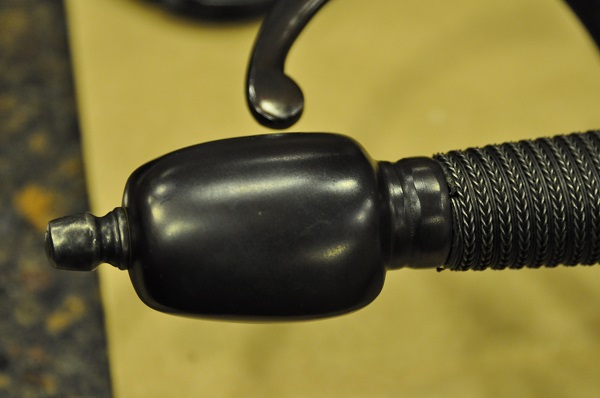I must have made some kind of grave error last Sunday when I put the Town Guard away before heading to university for the week. I applied a light coat of Ballistol with a t-shirt to the sword's guard and blade before I left, and now, upon returning, I have found that the once dark (near black) bluing has gone to a shade of purple on the quillons and central part of the knucklebow. There are even a couple tiny orange spots of rust (circled)! Interestingly enough, I could not find any color change on the top of the pommel, where it would touch the hand. I handled the sword with and without a glove (the glove has never been near any kind of leather treatment), but I thought that carefully oiling the thing would be enough! It was stored in a bedroom (dry air; it is winter here and I do not have a humidifier in the house) with a piece of the light sort of tissue paper found in bags for gifts gently laying on top (not tucked in, no sealing effect at all) to prevent dust. I'm baffled that simple handing would produce such results so quickly (and on areas so far from the actual grip and the cross where the finger actually wraps around). I do not believe that anyone in my family handled it when I was gone. What did I do wrong? What should I do now? Thanks for all your help.
Lee
EDIT: It may be hard to see, but the bits of rust are orange like a copper wire.


